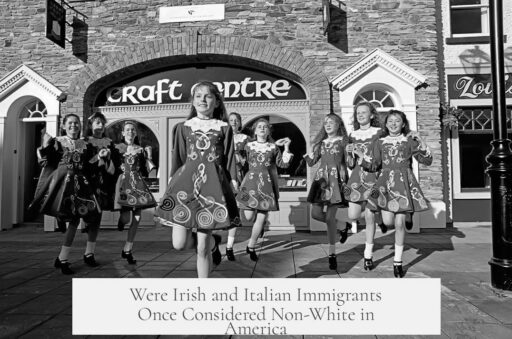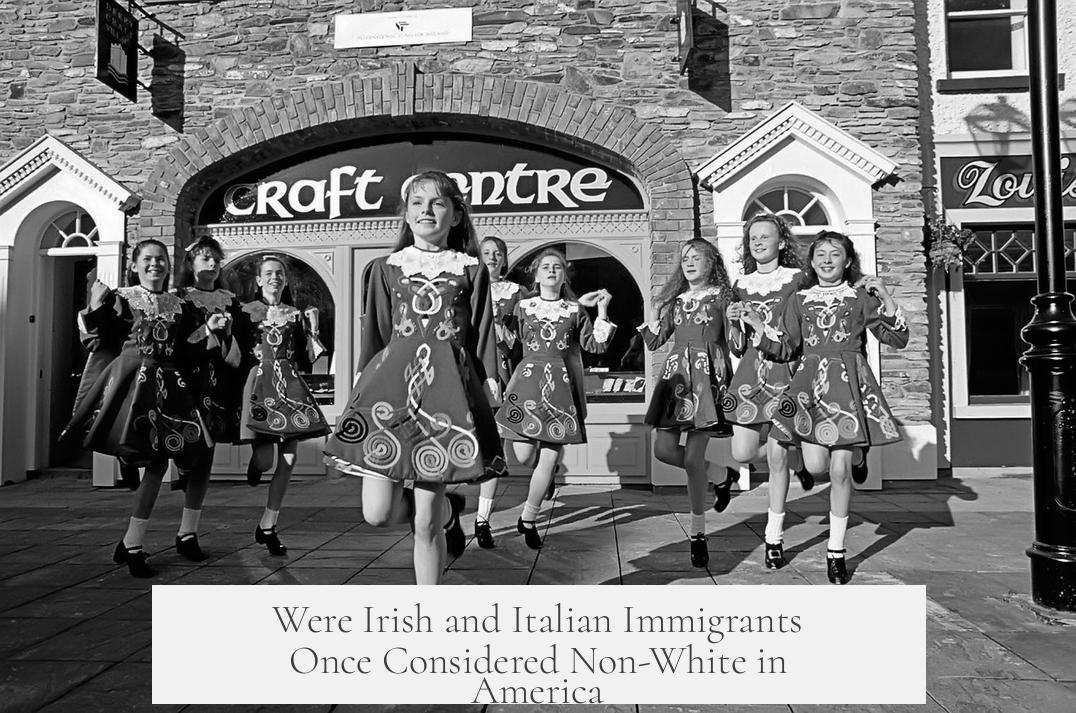The idea that Irish or Italian immigrants were not considered white in the United States is somewhat exaggerated and oversimplified. Both historical context and shifting racial definitions reveal a more complex reality. They faced discrimination and exclusion, but this did not equate to a total denial of whiteness as understood in modern terms.
In the 19th and early 20th centuries, American society used categories different from those today.
- Race and ethnicity were not fixed or equivalent as they are now.
- Today, many Americans view race as primarily Black and white, with ethnicity as secondary.
- Back then, distinctions often centered on religion, nationality, and class, rather than rigid racial lines.
This historical distance means that claims like “Italians weren’t considered white” reflect modern notions imposed on the past. The term “white” then included many European immigrant groups, but social acceptance varied.
The Irish arrival provides an early example. Protestant Irish immigrants, mainly Scots-Irish from Ulster, were welcomed and recruited as settlers.
Conversely, Irish Catholics faced hostility and exclusion in many regions.
- Nativist movements like the Know-Nothings actively discriminated against Catholic immigrants.
- The predominant ideal was English, Protestant, and Anglo-Saxon origin.
- Immigrants faced xenophobic stereotypes linking them to laziness or crime.
Despite prejudice, these groups were never equated fully with African Americans under slavery.
The concept of “free white man” in America depended on the legal and social power to enslave Black people. European immigrants, regardless of economic hardships, held this status of freedom.
Slavery and race-based hierarchy created a powerful divide that defined whiteness legally and culturally.
Over time, Irish, Italian, and other immigrant groups made progress.
- They entered politics, business, and public service.
- Their presence diluted earlier stereotypes and opened avenues for acceptance.
- Their ethnic identities persisted, but these mattered less in daily social interaction.
By the mid-20th century, especially post-World War II, the distinctions between European ethnicities blurred in the U.S.
People became “white” regardless of whether their forebears were Italian, Irish, German, or other European backgrounds.
This shift occurred alongside the heightened racial dichotomy focused on Black and white Americans, overshadowing earlier ethnic feuds.
In summary, Irish and Italian immigrants experienced exclusion and prejudice based on ethnicity, religion, and class. This certainly complicated their social status relative to the old Protestant Anglo elite.
But this was not a simple absence of whiteness, as current narratives sometimes suggest. The evolving meaning of race, the impact of slavery, and the political incorporation of immigrant groups show a layered reality.
| Aspect | Historical Reality | Modern Misinterpretation |
|---|---|---|
| Definition of “White” | Fluid and tied to freedom and power over enslaved people. | Fixed racial category conflated with ethnicity. |
| Discrimination Basis | Religion, origin, and class, especially anti-Catholicism. | Complete racial exclusion from whiteness. |
| Social Progress | Gradual assimilation and political power gained. | Seen as a sudden “becoming white” event. |
Ultimately, the framing that Irish and Italians were once not white is a simplification. It overlooks how race, ethnicity, religion, and power intertwined in American history. The immigrant groups occupied a complex social space—sometimes marginalized but always inside the broad boundary of whiteness as defined by slavery and freedom.
Key takeaways:
- Irish and Italians faced ethnic and religious discrimination but were legally considered white.
- Slavery and freedom shaped the American definition of whiteness more than ethnicity or religion.
- Modern views of race misinterpret historical social categories by applying today’s racial framework to the past.
- The gradual assimilation of these groups involved political power and economic integration, not a sudden racial reclassification.
- By mid-20th century, ethnic distinctions among European Americans weakened as racial focus concentrated on Black and white boundaries.
Is the Idea That the Irish or Italian Were Once Not Considered White in the US Grossly Exaggerated?
So, were the Irish or Italians ever really “not white” in America, or is that just a catchy tale told around historical campfires? The short answer is: yes and no. They weren’t seen as fully equal or “white” in the sense we understand today, but the idea that they were outright non-white is a bit exaggerated and oversimplified. That’s the juicy, nuanced reality tucked beneath the bold headlines.
The 19th and early 20th centuries were a period of profound confusion about race, ethnicity, and national identity. Today, Americans tend to lump race and ethnicity into a neat box. You are “white,” “Black,” “Asian,” etc. But back then? Not so much. Ethnic groups like the Irish and Italians weren’t simply black or white in the modern sense—they were racialized in a different, more complicated way.
Let’s peel back the layers. Early Irish immigrants to America were mostly Protestant Scots-Irish from Ulster. This group was welcomed with open arms by English-American colonies, discussed farming and community-building. Catholics? Not so much. They faced active exclusion and suspicion. It’s crucial to remember that the old Anglo-Protestant establishment saw Catholicism itself as a threat.
This hostility didn’t vanish quickly. In fact, it sometimes took ugly forms. Enter the Know-Nothing movement, a feverish wave of nativism that openly attacked immigrants, especially Catholics with Irish or Italian heritage. Their arguments were tired: immigrants are lazy, stealing jobs, and diluting “good Anglo-Saxon stock.” Newspaper ads screamed discrimination, always favoring servants who were white, English, and Protestant.
This paints a picture of discrimination, but does it equal “not white”? Here’s where historical context matters. Unlike African Americans who suffered under slavery, Europeans—even the poorest Irish and Italians—were free citizens. This freedom was a foundational part of what “whiteness” meant in America. It included, disturbingly, the right to enslave black people. So while Irish immigrants might be disparaged or socially marginalized, they weren’t equated with African Americans under law or culture.
That’s a significant distinction. The “freedom” of European immigrants involved social privileges, legal standing, and civil rights that slavery and racism systematically denied to Black Americans. This difference persisted well beyond the Civil War, solidifying a racial hierarchy where European immigrants—even the newcomer Catholics—were incorporated into “whiteness” over time.
Intriguingly, the inclusion wasn’t automatic or uncontested. Irish and Italian immigrants made savvy moves to climb social ladders. They entered local government, founded businesses, and built communities that challenged negative stereotypes. This process enabled them to shift public perception, turning from outsiders to integral parts of American society.
Over time, the significance of European country of origin waned. After World War II, identifying as Italian, Irish, German, or Polish mattered less to outsiders. You were simply “white.” But don’t confuse this with full erasure of ethnic identity. Many held tight to their cultural traditions while navigating the shifting social landscape.
This transition also coincided with crucial social shifts. The rise of the civil rights movement caused Americans to see race more in terms of Black and white—a binary that overshadowed earlier divides among European ethnicities. Suddenly, the old Irish-Protestant vs. Irish-Catholic squabbles paled next to the pressing issue of African American rights.
So, what should you take from this story?
- The narrative that Irish and Italians were “not white” is simplified and modern. It applies today’s racial categories back to a more fluid and complicated past.
- Discrimination they faced was real and painful, rooted in religion, class, and culture as much as skin color.
- Slavery and freedom shaped racial boundaries—even the poorest European immigrants benefited from these rigid structures.
- Assimilation and political power helped immigrant groups claim whiteness, transforming America’s ethnic mosaic.
If you ever wonder why the “not white” story sticks, it’s because it simplifies messy historical realities to fit modern understandings of race. Remember that history doesn’t hand out neat labels. It offers complexity, contradictions, and transformation.
In asking whether the idea is grossly exaggerated, it’s less about outright falsehood and more about lost context. Yes, the Irish and Italians were marginalized, but they were seldom truly outside the boundaries of “whiteness” as defined by power and law. The real story is a testament to America’s evolving identity and how people from different backgrounds maneuvered their way into the national fabric.
So next time you hear that the Irish or Italians were “not white,” pause and think. Ask: “What did ‘white’ really mean then? And for whom?” Maybe then history becomes a little less black and white—and a lot more fascinating.



